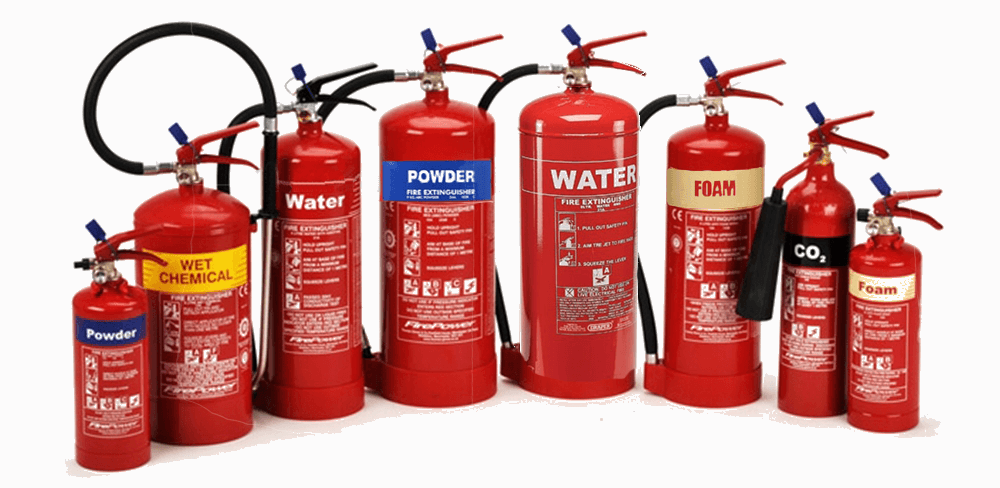Fire is a powerful force that can quickly spread and cause immense destruction. Each year, fires cause more than $25 billion in damages across the United States alone. That’s why it’s essential to have an effective fire-fighting tool on hand at all times—like a trusty fire extinguisher.
Fire extinguishers are one of our best defenses against the destructive power of flames, but they’re not just for putting out fires: They can also be used to contain them until professional help arrives. To do this effectively, however, you need to make sure your fire extinguisher is up-to-date and well-maintained. In this article we’ll discuss everything from types of fire extinguishers, proper use and maintenance, as well as where to find replacement parts if needed.
No matter what type of business or home you have, having a reliable fire extinguisher on hand should always be part of your safety plan. With their portability and ease of use, they offer much-needed peace of mind in case a blaze breaks out so let’s get started learning how to choose the right one!

Types Of Fire Extinguishers
There are several different types of fire extinguishers, each designed to combat a specific type of fire. Dry-chemical extinguishers utilize an agent that interrupts the chemical reaction in the fuel source; they are effective on Class B and C fires. Co2-extinguishers use carbon dioxide gas which is heavier than air and displaces oxygen from around the fire, reducing its intensity. Foam-extinguishers work by smothering flammable liquid fires or cooling them down with water and foam, making it suitable for Class A and B fires. Halon-extinguishers release gases such as halogenated hydrocarbons into the atmosphere which interrupt the chain reaction at a molecular level and prevent further combustion – these are commonly used to fight electrical fires (Class C). Water mist extinguishers employ microscopic droplets of water suspended in air to disrupt flames, mainly used on Class A fires due to their ability to cool hot surfaces while not conducting electricity when applied on electrical equipment. Moving onto fire extinguisher classes…
Check out all our types of fire extinguisher
Fire Extinguisher Classes
When it comes to fire extinguisher classes, there are several different types and classifications for each type. The most common classification is based on the type of fuel that a particular fire extinguisher can be used to combat. There are four main classes of fire extinguishers – A, B, C, and D – each designed for tackling specific types of fires. Class A fire extinguishers are suitable for combating combustible fuels such as wood or paper; Class B fire extinguishers are designed to tackle flammable liquids like gasoline; Class C fire extinguishers work best when fighting electrical fires; and finally, Class D fire extinguishers are ideal for dealing with burning metals such as magnesium or lithium.
In addition to these basic categories, many modern-day models also come with ratings which indicate how much water or other agent they can hold and how long they will last in a certain situation. Fire Extinguisher Ratings (FER) measure their effectiveness against specific combinations of flames and materials. This makes them highly reliable tools when fighting any kind of blaze. With the right knowledge about these ratings, individuals can choose an appropriate model depending on their needs and the severity of the potential hazard.
These facts make choosing a suitable model even more important since not all fire extinguishers have the same capabilities. Knowing what type and rating your local environment requires is essential if you’re looking to ensure maximum safety from possible outbreaks of fires in your area. To wrap up this section on fire extinguisher classes, understanding what each type offers provides invaluable insight into selecting an effective device that meets all necessary requirements.
Fire Extinguisher Uses(Application)
Fire extinguishers are an essential part of fire safety and should be used in the event of a fire. It is important to understand how to properly use a fire extinguisher as well as where it must be located for optimal protection, how to maintain it, and how often to inspect it.
The following details provide information on proper application:
- Fire Extinguisher Placement:
- Fire extinguishers must be placed in clearly visible locations that can be accessed quickly in case of emergency.
- They should also be positioned at least 10 feet away from any potential ignition sources like heaters or furnaces.
- All exits leading out of the building should have one easily accessible fire extinguisher in place.
- Fire Extinguisher Maintenance:
- The manufacturer’s instructions should always be followed when maintaining a fire extinguisher.
- Check the pressure gauge regularly and make sure the pin is still intact; if not, replace immediately.
- Refill or recharge your fire extinguisher according to recommended timelines (usually annually).
- Fire Extinguisher Inspection:
- Anytime a visual inspection reveals damage or corrosion, you should contact a certified technician for repairs before using again.
- Monthly inspections should include checking for correct mounting height and unobstructed access points as well as making sure all seals are secure with no signs of tampering or leakage present.
- Annual tests conducted by qualified professionals will ensure both physical integrity and functionality of your equipment is maintained safely and effectively over time.
It’s in everyone’s best interest to become familiar with these guidelines regarding fire extinguishers so they can act correctly during an emergency situation knowledge is power! Taking simple steps such as becoming educated on proper placement, maintenance, inspection and operations can help keep our homes safe from fires.
